- News
- Reviews
- Bikes
- Components
- Bar tape & grips
- Bottom brackets
- Brake & gear cables
- Brake & STI levers
- Brake pads & spares
- Brakes
- Cassettes & freewheels
- Chains
- Chainsets & chainrings
- Derailleurs - front
- Derailleurs - rear
- Forks
- Gear levers & shifters
- Groupsets
- Handlebars & extensions
- Headsets
- Hubs
- Inner tubes
- Pedals
- Quick releases & skewers
- Saddles
- Seatposts
- Stems
- Wheels
- Tyres
- Tubeless valves
- Accessories
- Accessories - misc
- Computer mounts
- Bags
- Bar ends
- Bike bags & cases
- Bottle cages
- Bottles
- Cameras
- Car racks
- Child seats
- Computers
- Glasses
- GPS units
- Helmets
- Lights - front
- Lights - rear
- Lights - sets
- Locks
- Mirrors
- Mudguards
- Racks
- Pumps & CO2 inflators
- Puncture kits
- Reflectives
- Smart watches
- Stands and racks
- Trailers
- Clothing
- Health, fitness and nutrition
- Tools and workshop
- Miscellaneous
- Buyers Guides
- Features
- Forum
- Recommends
- Podcast
review
£1,351.00
VERDICT:
Super looking bike, well specced for the money and a surprisingly good ride for the weight – once you swap the tyres
Great quality frame and fork with all the brazings
Excellent handbuilt touring wheels
Solid spec that can be tailored to suit
Harsh and draggy tyres
Weight:
14,770g
Contact:
At road.cc every product is thoroughly tested for as long as it takes to get a proper insight into how well it works. Our reviewers are experienced cyclists that we trust to be objective. While we strive to ensure that opinions expressed are backed up by facts, reviews are by their nature an informed opinion, not a definitive verdict. We don't intentionally try to break anything (except locks) but we do try to look for weak points in any design. The overall score is not just an average of the other scores: it reflects both a product's function and value – with value determined by how a product compares with items of similar spec, quality, and price.
What the road.cc scores meanGood scores are more common than bad, because fortunately good products are more common than bad.
- Exceptional
- Excellent
- Very Good
- Good
- Quite good
- Average
- Not so good
- Poor
- Bad
- Appalling
Spa Cycles' Wayfarer is an out-and-out touring bike with a quality frame and fork and a solid spec for an attractive price. A relentlessly draggy and jarring ride turned out to be almost entirely the fault of the tyres.
The 'Wayfarer' name is a nod to the early days of rough-stuff riding and what we would now call adventure touring (they just called it touring in them days). 'Wayfarer' was the byline of cyclist and writer Walter MacGregor Robinson, whose exploits a century ago inspired a whole movement that coalesced into the Rough Stuff Fellowship.
There's a fair bit about Spa Cycles' dedicated touring bike that Robinson would have recognised: a steel frame and fork, plenty of braze-ons for rack and mudguard mounts, a leather saddle and the stylish British Racing Green paint job. He might also have been familiar with the weight of a package like this, and if he lugged something similar over the Welsh mountain passed then good on him, I say.
Frame and fork
The frame is, for the most part, a handsome thing, neatly welded from Reynolds 725 heat-treated tubes. This is a lightweight tubeset but the inclusion of frame gussets, presumably for extra stiffness, rather offsets this.
The paint looks traditional, but up close reveals a glittery depth that's very appealing. Spa uses a process called Electrophoretic Deposition for the paint, and it makes for a quality finish that certainly seems to stand up to some robust use. It only comes in green, though; or blue if you're choosing a short frame.
There's everything you could need in terms of places to attach things: two bottle mounts inside the frame (Spa supplied the cages) and a third under the down tube. The fork comes with low-mount rack mounts and separate mudguard eyelets. At the back, the mudguards and rack also have their dedicated places, all neatly done. The Tubus rack comes as standard and is good for 25kg of gear.
The TRP Spyre cable-operated disc brakes are the main addition to this incarnation of Spa's touring bike. The big advantage of fitting disc brakes is that it frees up a lot of space for tyre clearance, and this was huge both back and front, even with the full-length SKS mudguards and 32mm tyres. You could go much bigger, stick a mountain bike transmission on and call it a gravel bike.
Geometry
Frames come in four sizes, between 47cm and 58cm, and two 'lengths', meaning you should be able to find one that's right for you depending on your height and reach. After discussions with Spa, I chose the 58cm Long frame size and it was an excellent fit (I am 6ft 3in).
That amazing stack of spacers under the stem amounts to 75mm. I did ride it like this, once, to see if I could understand why some tourists ride in this position (I couldn't). After that I dropped the bar to the level of the saddle and that gave me a still fairly upright ride – enough to remind me I wasn't on the speedy bike now, but still with somewhere to go (the drops) to get out of the headwind that seemed to blow without end through the test period.
The enormous 1,109mm wheelbase made for an incredibly stable ride, not to mention outstanding toe clearance, even for my size 11s. While high-speed cornering was in short supply due to the nature of the riding and the endless headwinds I encountered, this still felt like the most stable and non-threatening bike to take down a hill.
Similarly, if you've ever been blown off your bike – and that's not nearly as funny as it sounds (unless you're watching it happen to someone else) – then you can be sure it's never going to happen on the Wayfarer, which rode straight and true into belting Pennine gales. The neutral head angle made steering steady; the fairly steep seat angle kept my weight over the cranks for slow-speed hill toils.
Braking and shifting
The TRP Spyres proved adequate performers once bedded in – which is to say, they were quite capable of pulling up a laden tourer in descent, quite a bit to ask of any brake. The rear seemed to lack the evident bite of the front brake. I'll put that down to the longer cable run. The frame bracings at the rear dropouts are a bit agricultural to my eyes, but necessary for disc braking forces and to ensure enough stiffness for heavy load carrying.
Given a free choice over how the bike should be specced, it was tempting to go for the best of everything but I opted to stick fairly closely to the basic package. This included Spa Cycles' own triple chainset with its Zircal chainrings. Those are really smart; the chainset itself is a bit rough and ready in comparison but stiff enough for sure.
Shifting at the front, taken care of by a Shimano Sora triple mech, seemed fine in the workstand, but on the road I had some difficulty getting down onto the small ring, with any hint of a load on the chain. I resorted to an unusually wide gap between mech and chain in the lowest gear, and used the trim function to reduce chain rub in higher gears. That's what trim is for, I suppose, but it wasn't an elegant solution. (I have achieved perfect shifting on another bike with identical spec so it can be done with a bit of patience).
The rear combination of a Shimano Deore mountain bike mech on an 11-32 9-speed cassette worked flawlessly in combination with the Sora STI shifters.
Handbuilt wheels
At this price, handbuilt wheels from Spa's own workshop are a rare and welcome addition. These are built with Sapim double-butted spokes on Kinlin rims (32 holes at the front and 36 at the back) and were good and tight. They've built up into tough, smart-looking wheels that will undoubtedly be strong enough for some serious touring.
The rear hub is a trusty Shimano Deore, disc version. At the front, one of my upgrades was to an SP PD8 dynohub, allowing for an SP/B&M dynamo lighting upgrade that added £125 to the price.
The lights are good and bright enough for daytime running and murky conditions. One welcome feature is that they have little auxiliary bulbs that run on after you stop moving. I reckoned on an extra five minutes' glow-time.
Finishing kit
Seatpost, stem and bar are all standard FSA fare and worked fine, though I didn't much like the handlebar and couldn't find a comfortable position anywhere. The tape is Spa's own and is traditional cork-type and decently thick.
The saddle, one of Spa Cycles' own range of leather seats, looks like it might account for half the weight of the bike but it's surprisingly okay when you take it off to check. I found it comfortable from the start, though a bit too wide for me. I also have one of Spa's saddles with titanium rails, which comes in a sportier cut that suits me well. I fitted that for the rest of the test. They're definitely worth a look as they're good value.
Spa threw in one of its canvas saddle bags. I like this: plenty of room inside for full waterproofs, tools, snacks and so on. It attaches with three simple straps. I suppose you can attach it to the bar, as in the photos, but more traditionally it's secured through the saddle loops and on the seatpost, Carradice-style. I thought the quick-release buckles made it more practical, if slightly less stylish, than a Carradice.
The dynamo also powered a USB phone charger, made by Adept Electronics. This worked only when the lights were switched off, and above a certain speed. The elongated shape was most bike-unfriendly and made it difficult to find anywhere on the frame or bar where it would fit comfortably. It also tended to slip out of the inadequate Velcro strap.
The ride
One small change I made over the standard spec was that I opted for a 50/40/30 chainset over the standard 48/38/28. I should have listened to Spa Cycles really, as even on unladen bedding-in rides around my local hills I plummeted into the gearing basement at every hill. I thought I would grind to a complete halt once loaded up but managed not to, in spite of taking it fully-laden over the North Pennines in what can only charitably described as 'early spring' conditions.
My other complaint was that the bike delivered a chattery, jarring ride over anything less than good surfaces. Even small stones sent a sharp jolt up through the bar, which I've never experienced on any of my steel bikes.
There's no doubt that the nearly 15kg weight of the supplied build is one of the reasons it's a grind on the climbs, but even on the flat, where the weight counts for less, the Wayfarer was reluctant to maintain any pace. The best description I can offer for the ride is that it was like piloting a tandem when the stoker's trying to have an easy day. If I tried putting in extra power, to coax the bike along, my ghostly stoker backed off even more. Throw in a minor gradient, or a headwind, and I was straight down into the small ring.
My winter Pennine crossing, from Consett to Penrith, amounted to 60 miles, and 6,000 feet of climbing, into a relentless westerly wind. It took me eight-and-three-quarter hours; an average of just over 7mph. At the end, I was pedalling the biggest squares seen outside of Elton John's spectacles case. Even in much more benign conditions, on fairly level riding and over 30 miles or so, I had to have a rest day the next day.
I'd had my suspicions all along that the Schwalbe Marathon tyres might be contributing to these unwelcome qualities. Eventually, I swapped them for a pair of Continental Contacts, which I knew to be comfortable and surprisingly quick because I've put in a thousand miles on them on my winter bike.
The transformation was incredible. I had my stoker back! Now, when I put in some extra effort, the bike responded by going quicker! I found myself riding in the middle ring where I had been in the small ring, and the large where I'd been in the middle. Not only that, but the tooth-rattling, jarring ride over rough tracks was tamed.
It's the most remarkable turnaround. The Wayfarer went from being a bike I couldn't wait to see the back of, to one that I'd certainly recommend for serious touring duties, though the overall weight means there are better places to look in Spa's range for more versatile all-rounders.
Value
At £1,351 the Wayfarer compares very well on price with some obvious competitors – even better when you consider most of the extra £250 cost over the basic package is accounted for by the dynamo hub and lighting system.
The basic package at £1,090 still includes the same quality handbuilt wheelset, which is rare on a bike at the thousand pound mark, and the frame, fork and finish are all very good.
> Buyer’s Guide: 13 of the best touring bikes
The Genesis Tour de Fer 20, for example, with the same tubeset, lower-geared triple chainset, dynamo and lights, is listed at £1,499.99. The Dawes Super Galaxy is £1,499 with a non-dynamo front hub.
Another option, the Thorn Club Tour Mark 5, also offers Reynolds 725 tubing, disc brakes and big clearances, with prices starting from £1,675.
Conclusion
The Spa Cycles Wayfarer came close to getting a bad review; with the supplied tyres it was such a drag to ride I needed a lie down after every outing. Switching the tyres changed all that and we are parting as friends. It goes to show how one poor component choice can scupper a good bike – a lesson for bike suppliers as well as customers.
Verdict
Super looking bike, well specced for the money and a surprisingly good ride for the weight – once you swap the tyres
road.cc test report
Make and model: Spa Cycles Wayfarer
Size tested: 58cm Long
About the bike
List the components used to build up the bike.
From Spa Cycles:
Frame Wayfarer 58cm BRG Long
Headset Tange Terious SRN
Bottom Bracket F-2001
Chainset XD2 silver 175mm 50/40/30 blk rings
Pedals None
Wheelset Rims Kinlin XD-230 32/36h blk
Front hub SP PD8 dynohub 6 bolt blk 32h
Rear hub Deore 6 bolt blk 36h
Spokes Stainless db silver
Cassette HG400 11/32 9spd
Tyres Marathon HS420 700x32
Tubes Schwalbe
Chain KMC 9spd
Front Mech Sora front mech
Rear Mech Deore M591 blk
Gear Shifters Sora 9spd STI
Brake Levers Sora 9spd STI
Brake Calipers TRP Spyre
Saddle Spa Nidd Brown
Seat Pin FSA SL-280
Collar Clamp Spa 29.8mm
Headset Spacer 75mm spacers + stem
Stem FSA OS-168 110mm
Handlebars FSA Wing Compact 44cm
Bartape/Grips Spa EVA Black Cork + Gel Pads 5
Mudguards SKS Chromoplastic black
Rear Rack Tubus Cargo Black
Misc. SP/B&M Dynamo Lighting Upgrade
Cyo IQ Premium T Senso+/Toplight Line Plus
Adept Electronics Velohub USB Charger
Tell us what the bike is for and who it's aimed at. What do the manufacturers say about it? How does that compare to your own feelings about the bike?
Spa Cycles says: "Sharing its DNA with our hugely successful Tourer the Wayfarer adds disc brakes and bigger clearances for more control, comfort and versatility.The frame is built from ovalised Reynolds 725 to give the stiffness needed for heavy load carrying with the compliance needed for long days in the saddle. Wide tyre clearance 47mm (with mudguards), three sets of bottle bosses, rack mounts, mudguard eyes and removable canti bosses cover all eventualities. It comes equipped with handbuilt wheels, wide range touring gearing and quality components including a Tubus rack, leather saddle, Schwalbe Marathon tyres and SKS mudguards."
This is an accurate description of the bike.
Where does this model sit in the range? Tell us briefly about the cheaper options and the more expensive options
The Wayfarer comes as a basic package at £1,090 but you can tweak the spec and add extra accessories more or less to your heart's content. Speak to Spa Cycles to discuss your build; they were very helpful.
Frame and fork
Overall rating for frame and fork
8/10
Tell us about the build quality and finish of the frame and fork?
A tidy build with neat welds. It's a lightweight tubeset, though the strengthening gussets rather offset that. The Racing Green finish is attractive, with glittery flecks for a modern touch. It seems hardwearing.
Tell us about the materials used in the frame and fork?
Reynolds 725 ovalised tubeset.
Tell us about the geometry of the frame and fork?
Frame and fork tested was the 58cm Long configuration – the largest in the range. A fairly slack head angle makes for good toe clearance and steady steering response. This is a good degree less than a Trek 520 Disc gravel bike for an equivalent frame size, for example.
The 74 degree seat angle is common in tourers; it puts your weight right over the bottom bracket, which is good for long, seated climbs if you don't like shunting too far forward in the saddle.
Head angle, 70.5
Seat angle, 74 degrees
Wheelbase, 1109.4mm
Effective top tube 586.5mm
Seat tube 580mm (BB centre to top)
Wheelbase 1109mm
Chainstays 465mm
Fork rake 59mm
Head angle 70.5
Seat angle 74degrees
The frame also comes in short versions for each frame size. See the Spa Cycles website for details.
How was the bike in terms of height and reach? How did it compare to other bikes of the same stated size?
I found the bike a good fit for my 6ft 3in, with plenty of room between saddle and bar to move about as required. The front end is tall even without the 75cm stack of headset spacers! With the saddle and bar roughly level, I got a slightly upright riding position for better viewing of the landscape, though I was glad to be in the drops to escape headwinds.
Riding the bike
Was the bike comfortable to ride? Tell us how you felt about the ride quality.
I found the bike comfortable on smooth roads but poor surfaces and even quite small stones resulted in a chattering ride that grew tiring very quickly. A change of tyres worked wonders.
Did the bike feel stiff in the right places? Did any part of the bike feel too stiff or too flexible?
This bike is very stiff (look at those reinforcing plates at the rear dropout!). This may also contribute a bit to the rather direct road feel.
How did the bike transfer power? Did it feel efficient?
To begin with, no, and I was at a loss as to where all my mighty power went. Late note: it went into turning the Schwalbe Marathon tyres.
Was there any toe-clip overlap with the front wheel? If so was it a problem?
None at all, even with full-length mudguards and my size 11 feet.
How would you describe the steering? Was it lively neutral or unresponsive? Entirely neutral. Adding load front or rear made little difference.
Tell us some more about the handling. How did the bike feel overall? Did it do particular things well or badly?
This is a very stable bike to ride. In spite of the huge wheelbase I steered it comfortably through Sustrans' best bike mazes. In high winds it's well anchored.
Which components had the most effect (good or bad) on the bike's comfort? would you recommend any changes?
The leather saddle is more comfortable than you might think, even while breaking in – if it fits your bottom. I found it a bit wide. I didn't much like the bar and found it hard to find any position that was comfortable for more than a few minutes. I have the flared version of the same bar on another bike and I'm not keen on that either.
Which components had the most effect (good or bad) on the bike's stiffness? would you recommend any changes?
The frame and fork, obviously the Reynolds 725 tubes are quite light but they're well gusseted in places for strength, so that must offset the light weight. Once I'd changed the tyres, it felt much more like I would expect a nice steel frame to ride. The FSA stem and bar are very rigid too.
Which components had the most effect (good or bad) on the bike's efficiency? would you recommend any changes?
The tyres generated an incredible amount of drag.
Rate the bike for efficiency of power transfer:
8/10
The weight's a bit of an issue, but once I ditched the tyres a lot of the resistance to forward motion vanished.
Rate the bike for acceleration:
5/10
Ye cannae change the laws of physics.
Rate the bike for high speed stability:
9/10
Not many high speeds reached. On descents, the bike was the least frightening I have ever ridden.
Rate the bike for cruising speed stability:
9/10
Loaded or unloaded, the long wheelbase makes this completely predictable.
Rate the bike for low speed stability:
8/10
Good, although as the luggage weight increases, like any bike, it becomes slightly unwieldy.
Rate the bike for flat cornering:
8/10
Steady away.
Rate the bike for cornering on descents:
9/10
Completely unalarming.
Rate the bike for climbing:
5/10
For a big load carrier, once I changed the tyres, it climbed steadily and could even be persuaded to accelerate! Low gears are a big help.
The drivetrain
Rate the drivetrain for performance:
6/10
The 9-speed Deore mech at the rear meshed perfectly with the Sora shifters. At the front, it could be difficult to get the chain to drop onto the small ring.
Rate the drivetrain for durability:
7/10
Solid touring components, good quality chainrings. The chainset is adequate but the finish is quite basic.
Rate the drivetrain for value:
8/10
Good at the price for the bike. Can be upgraded.
Tell us some more about the drivetrain. Anything you particularly did or didn't like? Any components which didn't work well together?
In hindsight I would have geared this lower (as Spa Cycles recommended!); the front shifting wasn't entirely sweet, but I have succeeded on another bike with identical setup in getting this spot on, so be patient.
Wheels and tyres
Rate the wheels for performance:
9/10
Solid handmade touring wheels on good quality components.
Rate the wheels for durability:
10/10
These are well-built and specced touring wheels; expect them to withstand some adventurous use.
Rate the wheels for weight:
6/10
The dynamo hub undoubtedly adds to the rolling resistance in weight and generator drag. It's an unavoidable price for the lighting system.
Rate the wheels for comfort:
7/10
These are load carriers, which takes priority over comfort, but once shod with comfortable rubber they felt good.
Rate the wheels for value:
9/10
In a bike starting at just over £1,000 the inclusion of these handbuilt wheels is a real bonus.
Tell us some more about the wheels.Did they work well in the conditions you encountered? Would you change the wheels? If so what for?
It's hard to separate the wheel performance from the tyres, but having another set of Spa Cycles handbuilt wheels on my Thorn Audax I know how smooth, stiff and quick-rolling these can be, even with 32mm tyres on. So I suspected the tyres and not the wheels were the culprits when it comes to the chattery ride quality. A change of tyres confirmed this.
Rate the tyres for performance:
4/10
Schwalbe Marathons are puncture resistant first and foremost. The ride was jarringly unpleasant and they created considerable drag.
Rate the tyres for durability:
9/10
Puncture-protected and hardwearing. It's why people fit them.
Rate the tyres for weight:
4/10
At 640g each according to the internet, it's a lot of extra rolling weight.
Rate the tyres for comfort:
3/10
Even quite small stones sent a jarring bump through the bike.
Rate the tyres for value:
8/10
Standard in the package and good quality for the price, but ask Spa to fit something else.
Tell us some more about the tyres. Did they work well in the conditions you encountered? Would you change the tyres? If so what for?
They very nearly spoiled the bike for me. Draggy on the roads, jarring and easily deflected on gravel and old railway tracks. Once ejected, it was a different ride.
Controls
Rate the controls for performance:
7/10
Adequate for the heavy job required.
Rate the controls for durability:
8/10
Nothing broke! Sensible choices overall for hardworking touring duties.
Rate the controls for weight:
5/10
Not really the key thing here; strength and reliability first!
Rate the controls for comfort:
5/10
I didn't like the bar. The shifter ergonomics were okay but the reach for the brake levers is big when in the drops.
Rate the controls for value:
7/10
Good at the price of the bike.
Tell us some more about the controls. Any particularly good or bad components? How would the controls work for larger or smaller riders?
The TRP Spyre Cable disc brakes performed adequately once bedded in, with enough bite to bring the heavy load to a halt. The rear brake never generated enough power to stop the bike on its own, though the front one could. I put this down to the losses in the cables and casings. OK, but not a patch on hydraulics.
Anything else you want to say about the componentry? Comment on any other components (good or bad)
The FSA seatpost is simple and secure, held firmly by Spa's own clamp.
Also from FSA, the stem was good, and although I found the bar hard on the hands – which is unusual for me – Spa's own bar tape is simple and pleasant.
The SKS guards – essential winter kit – are excellent and were well fitted. The clearance is huge.
I like the Tubus rack, too, which will carry up to 25kg.
The bike was supplied with a B&M Cyo IQ Premium T Senso+/Toplight Line Plus dynamo lightset which was plenty bright enough for visibility at night or in the winter murk. They stay lit for 5 minutes after you stop riding, too.
An Adept Electronics Velohub USB Charger also ran from the dynamo (when the lights were turned off). This worked okay, but its shape meant it didn't seem to fit sensibly anywhere on the bike.
The Spa Cycles saddlebag was a nice surprise too: masses of room inside, tough and water-repellent. The quick-release buckles made it practical to use.
Your summary
Did you enjoy riding the bike? Up until I changed the tyres, definitely not. After that, yes!
Would you consider buying the bike? Yes, if I had room in the stables for a touring-only bike.
Would you recommend the bike to a friend? Anyone looking for an out-and-out tourer should consider this.
How does the price compare to that of similar bikes in the market, including ones recently tested on road.cc?
It compares very well. The Genesis Tour de Fer 20 is an obvious comparison, with the same 725 tubeset, a lower-geared triple chainset and good quality wheels with a Shimano dynamo front hub running B&M lights. Listed at £1,499.99.
The Thorn Club Tour Mark 5 also offers Reynolds 725 tubing, disc brakes and big clearances, with prices starting from £1,675.
We still like the Dawes Super Galaxy. Still a classic at £1,499.
Rate the bike overall for performance:
7/10
Rate the bike overall for value:
7/10
Use this box to explain your overall score
Strictly speaking, the bike as supplied should have earned the Wayfarer a 5 or lower, because it was no fun to ride. Touring can be hard enough, without the bike fighting against you as well. Once the tyres had been identified as the culprit the Wayfarer came through: it's a quality frame and fork, great wheels, practical kit for the money and a capable load carrier. The classic looks are a bonus.
About the tester
Age: 54
I usually ride: Cannondale CAAD10 My best bike is: Tomassini Prestige
I've been riding for: Over 20 years I ride: A few times a week I would class myself as: Experienced
I regularly do the following types of riding: touring, sportives, general fitness riding, mtb,
Latest Comments
- chrisonabike 1 sec ago
Just as long as they're not "armed response"-I've...
- chrisonabike 7 min 28 sec ago
Ah, but refuse trucks / fire engines / ambulances ... oh and the single disability- adapted vehicle on the block (like in the Bristol LTN case)....
- Bigtwin 17 min 16 sec ago
How the actual F can you NOT go to prision for drinking vodka WHILE DRIVING A CAR!!??
- Bigtwin 22 min 40 sec ago
I wouldn't be meeting that Orange Pillock anywhere, let alone 1/2 way.
- Laz 38 min 23 sec ago
If the local police is unwilling or unable to do their job properly, then perhaps her insurance provider ought to re-evaluate the risks she poses...
- No Skinny Tyres 2 hours 17 min ago
It's a stabiliser, it was first used in WW2 to preserve chocolate in US rations. It allows the milk solids to fully dissolve, US chocolate is less...
- Martin1857 11 hours 32 min ago
As a member of the Co-op community (I live in a Housing Co-op) and a bike owner /rider, this is very sad news. We need more Co-ops not less.
- Dnnnnnn 11 hours 23 min ago
It is sad for the individuals concerned but (and this is a general point, rather than specific to this story), we're much better off overall for...
- No Reply 12 hours 14 min ago
I agree with Pogacar regarding social media. The likes of Facebook, Instagram have done untold damage, especially to the minds of young people....
- David9694 12 hours 19 min ago
Lorry carrying 25 tonnes of beer catches fire on the M11...




















































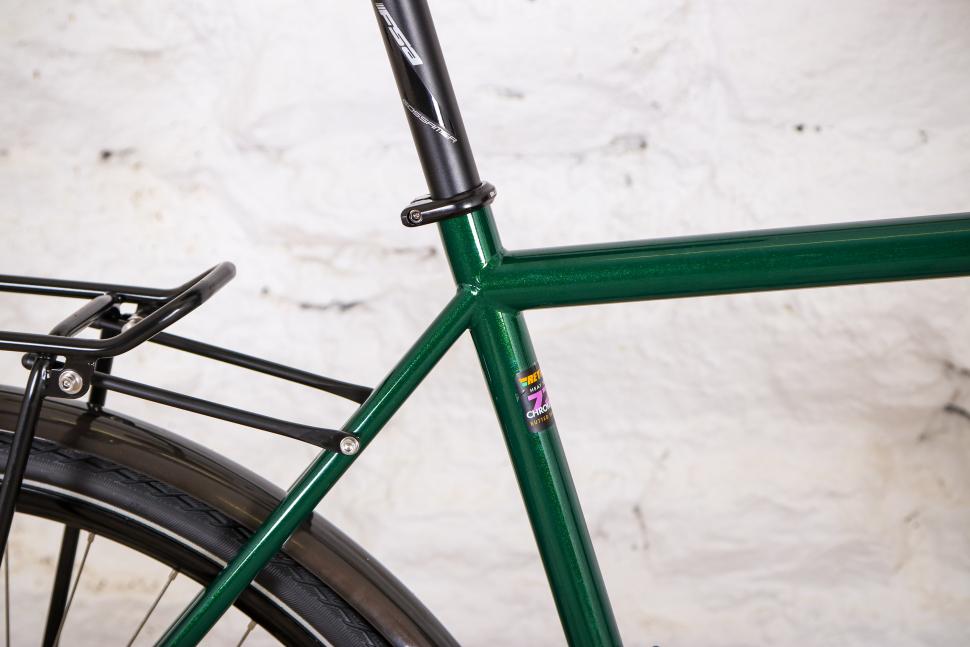

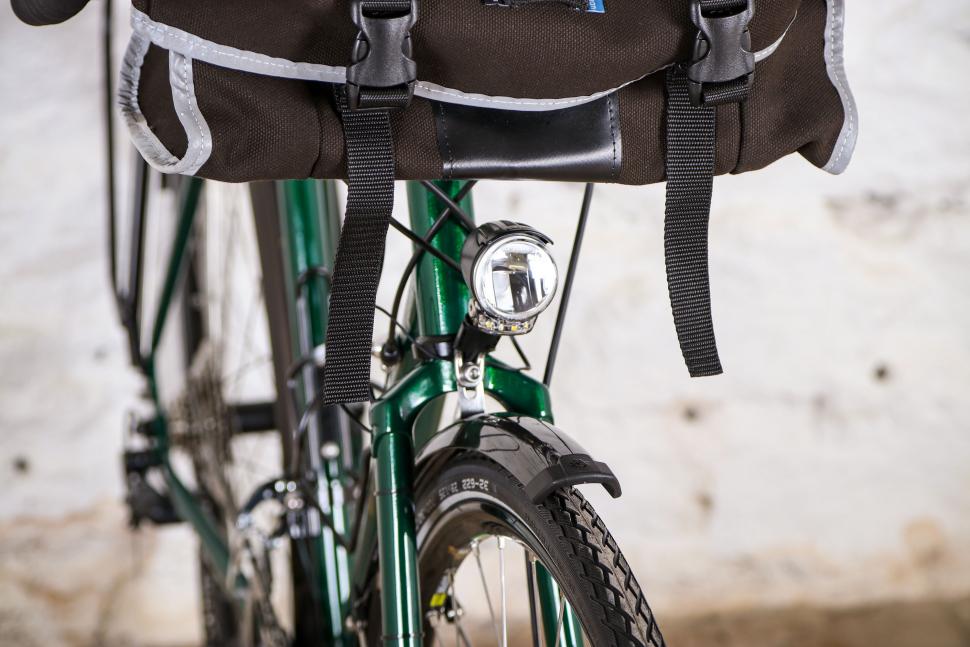

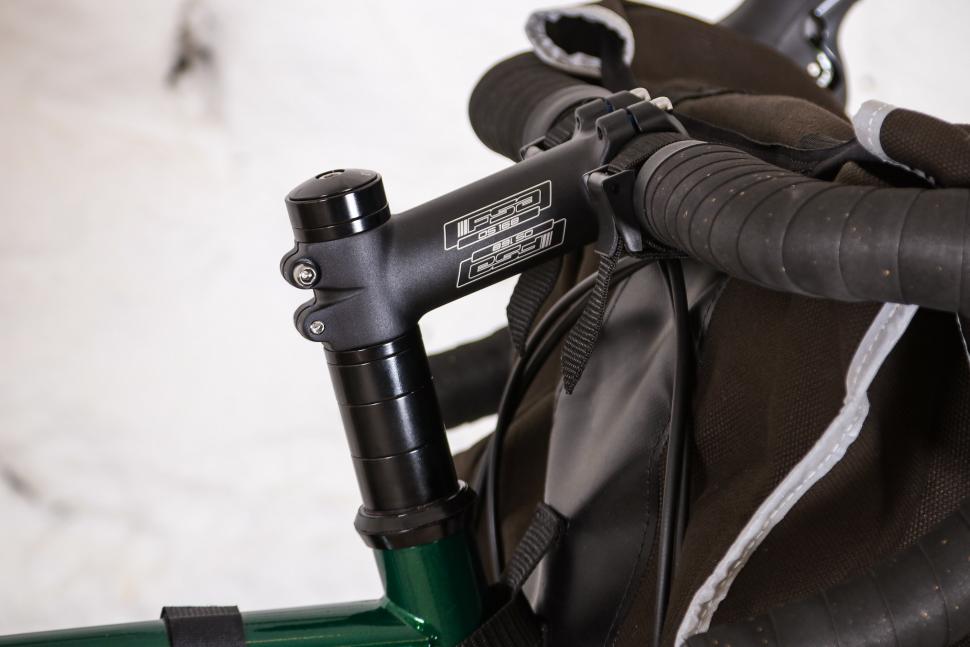
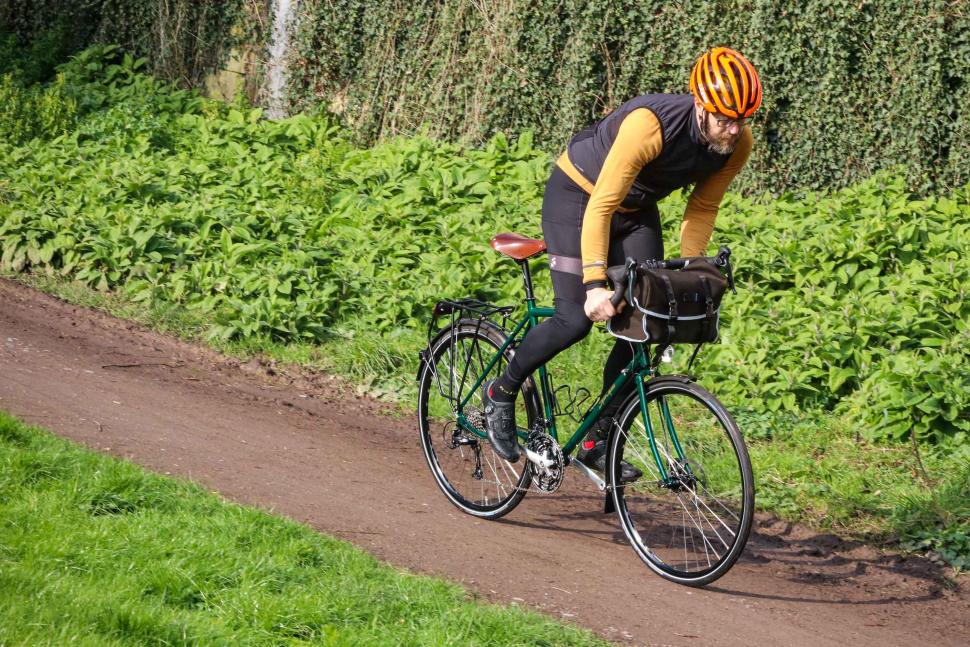
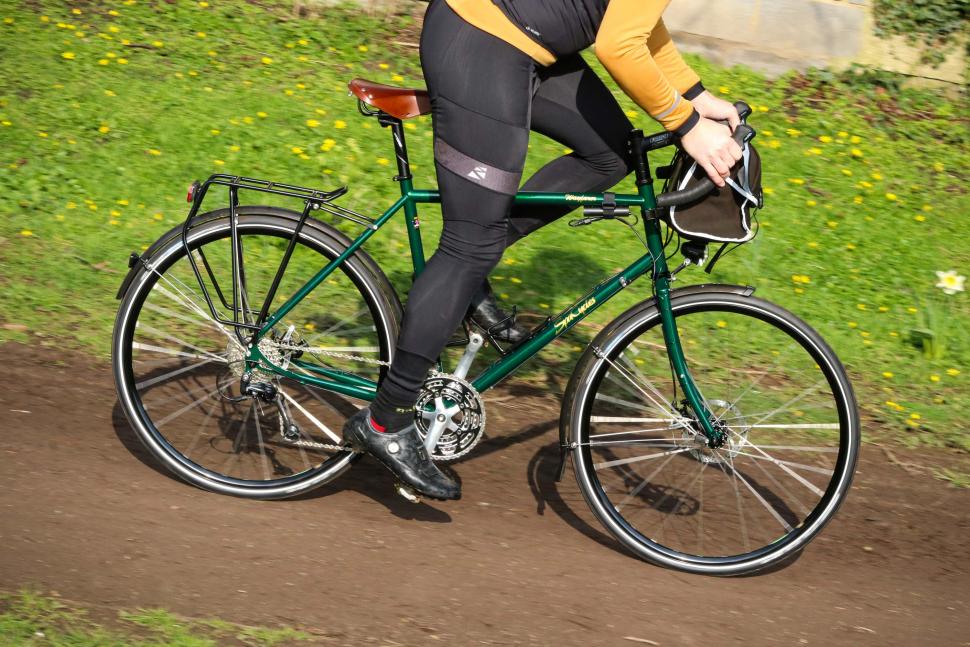
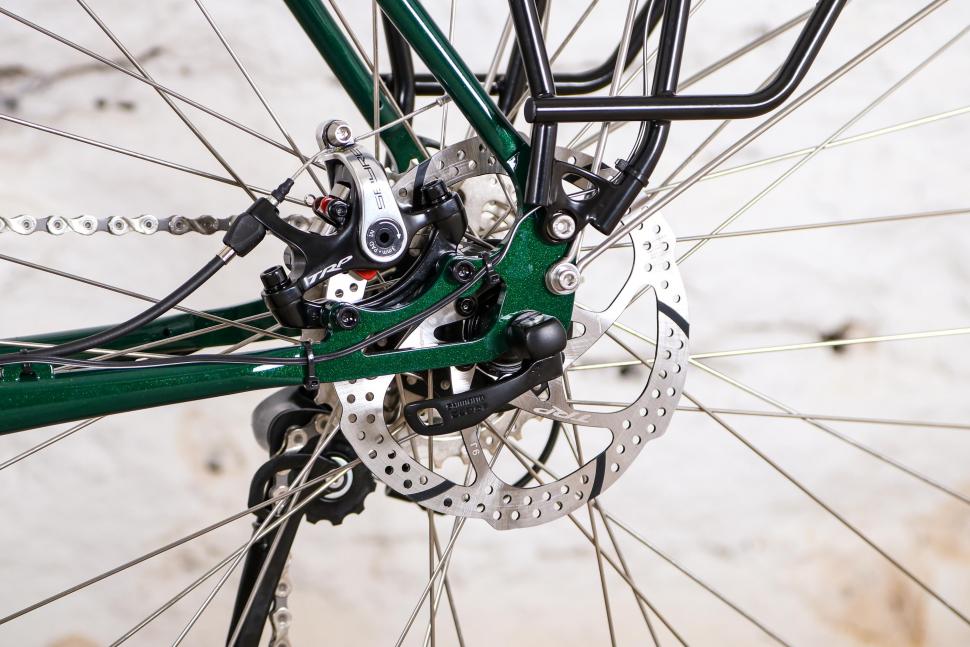
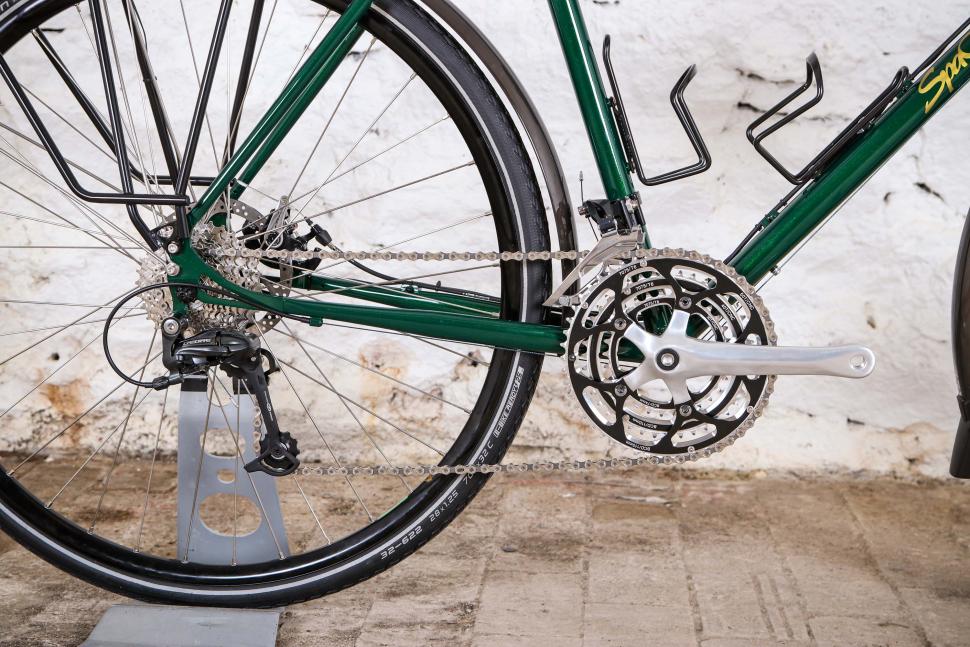
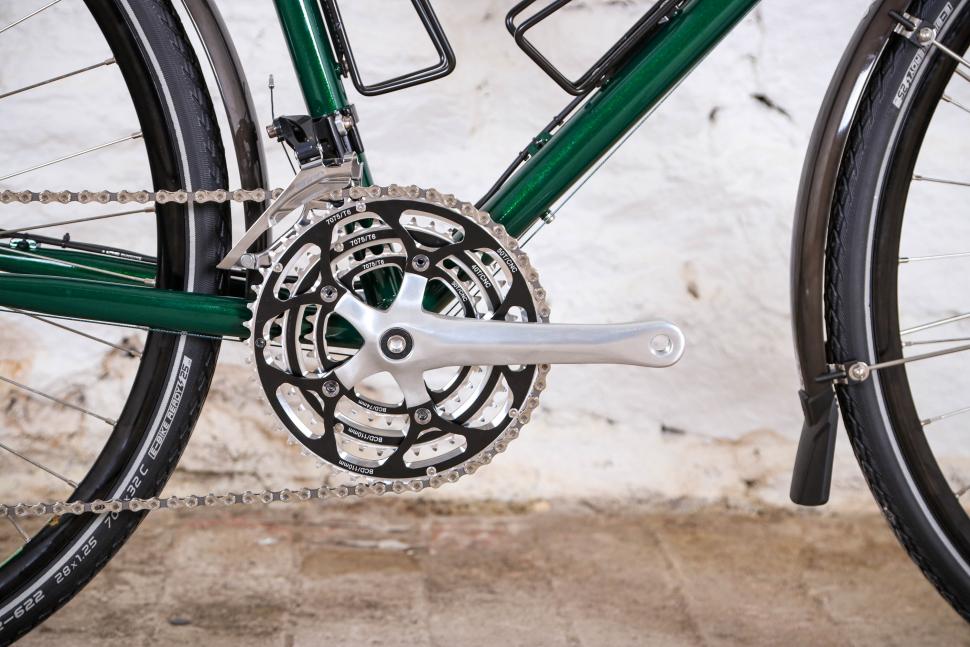
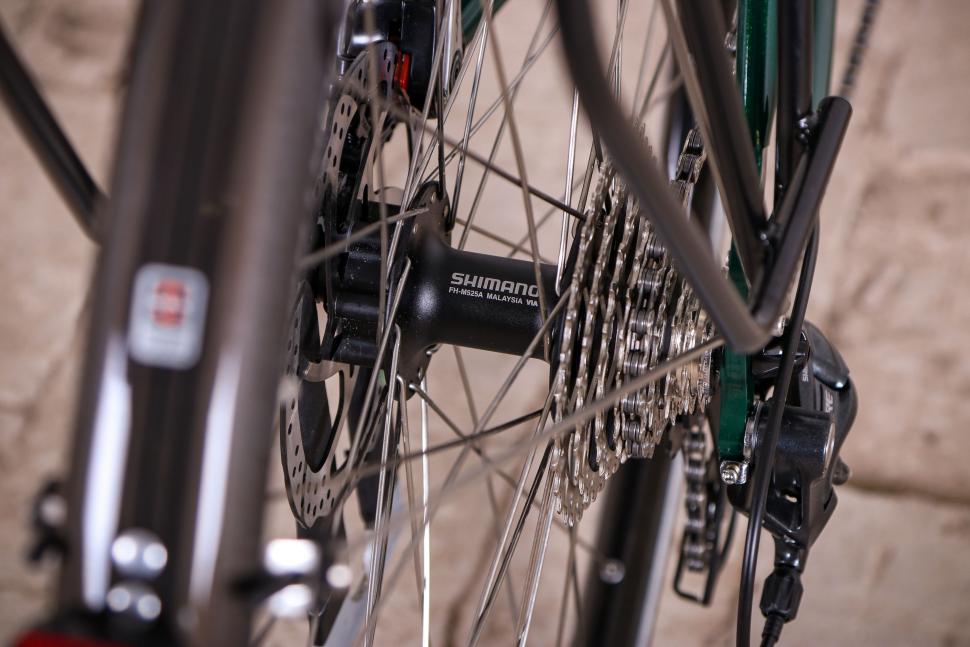
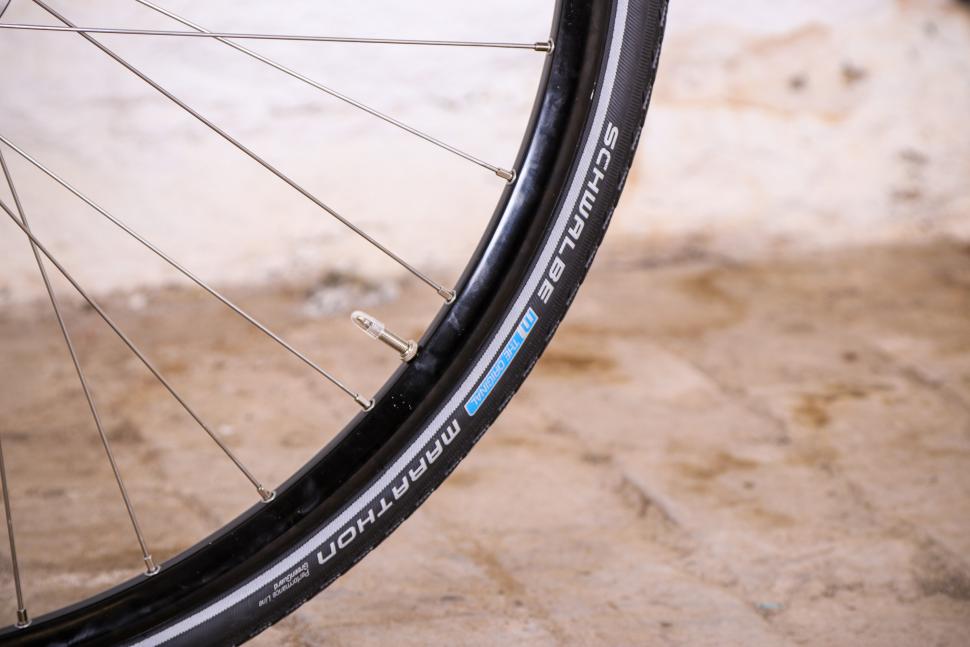
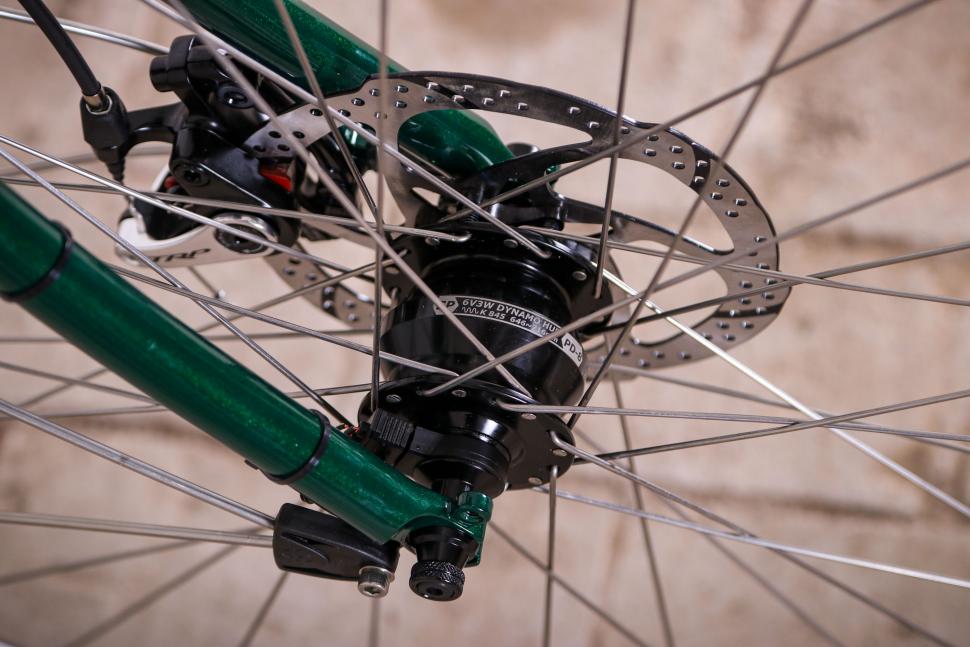
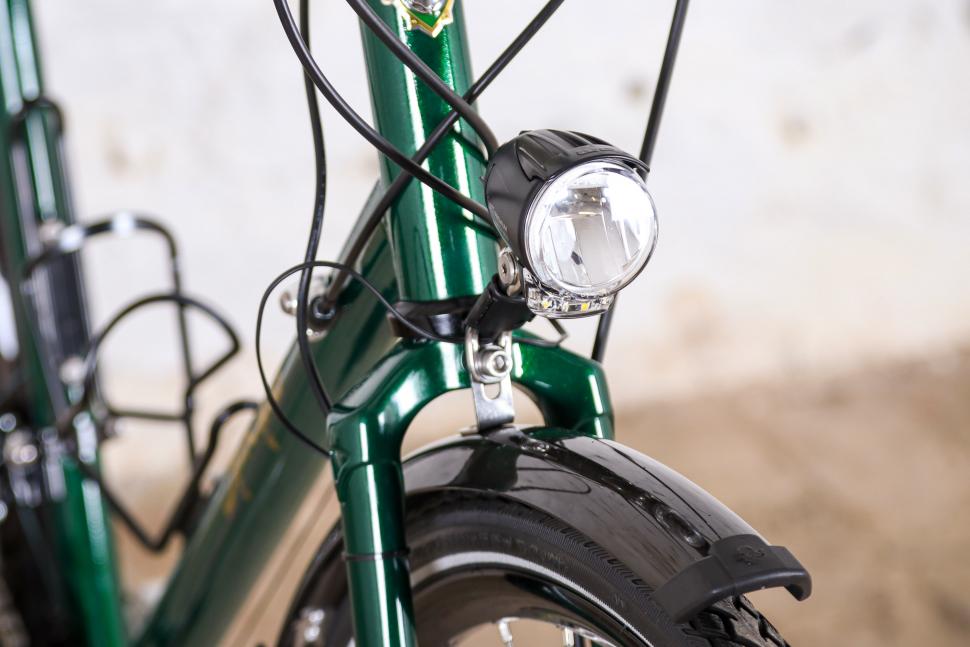
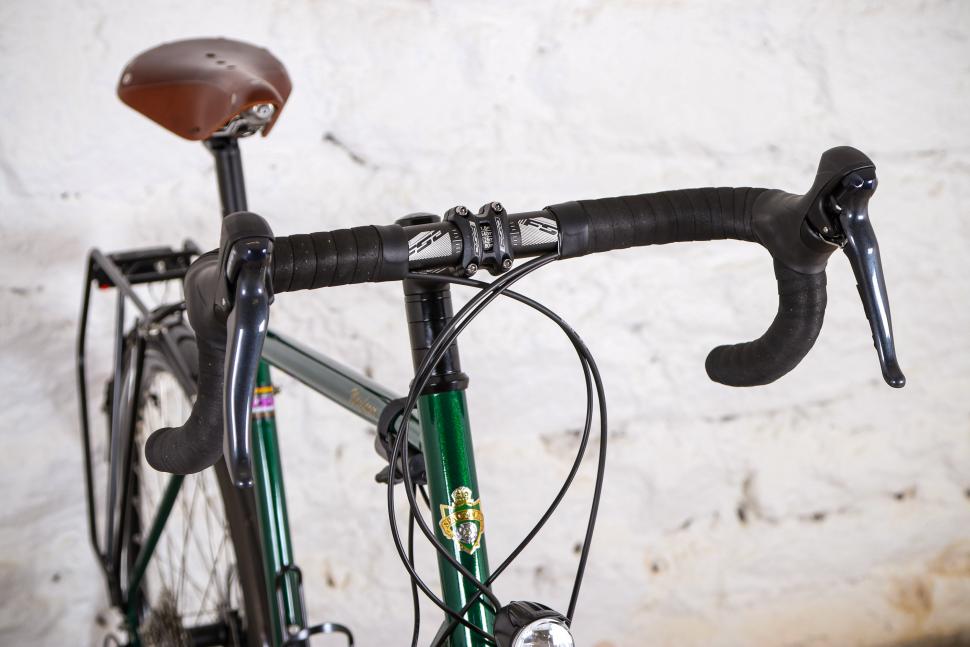

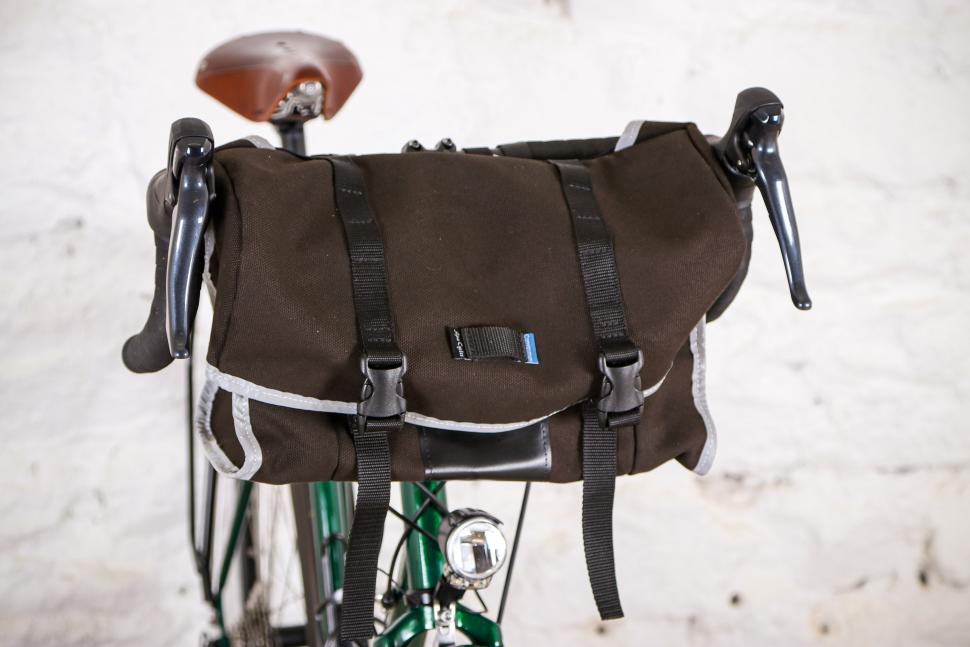
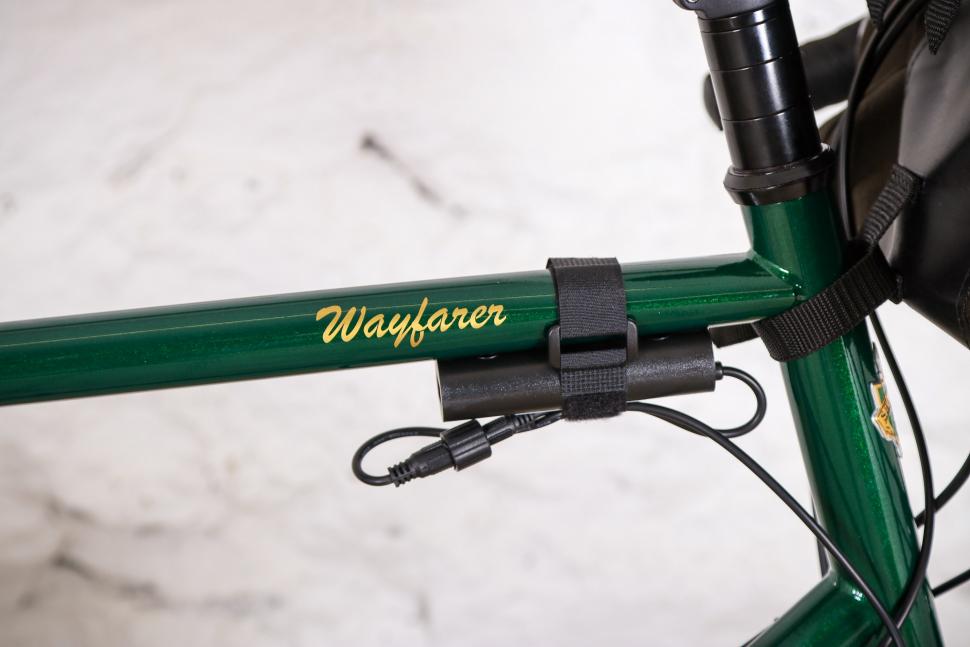
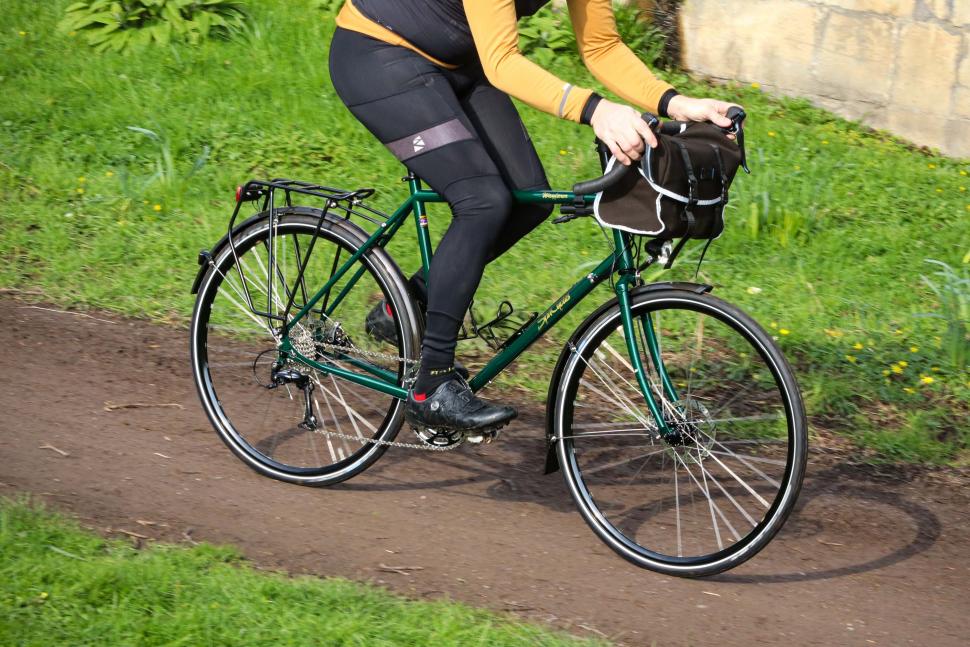
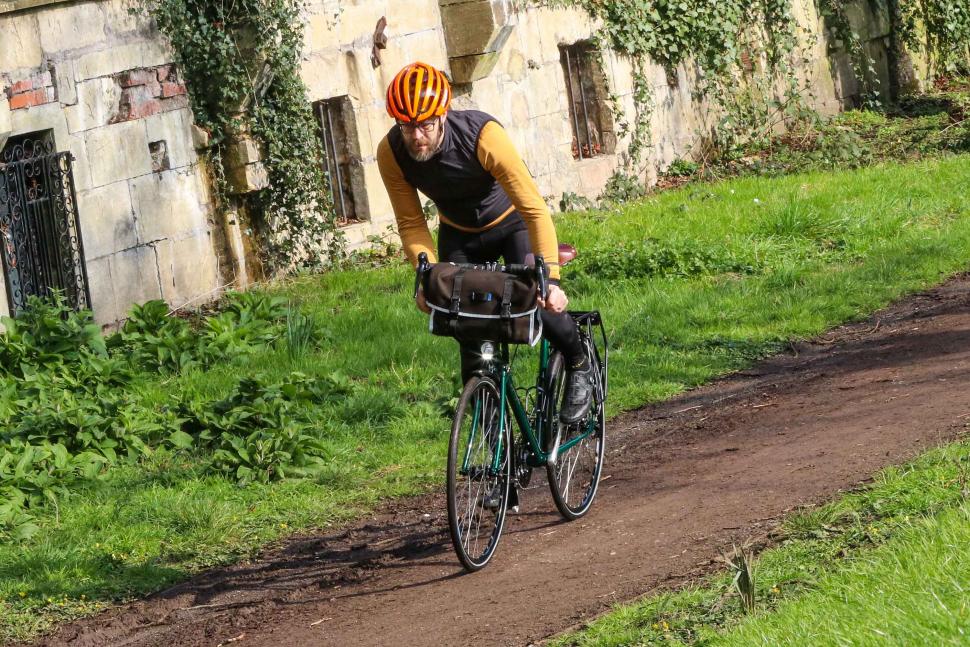
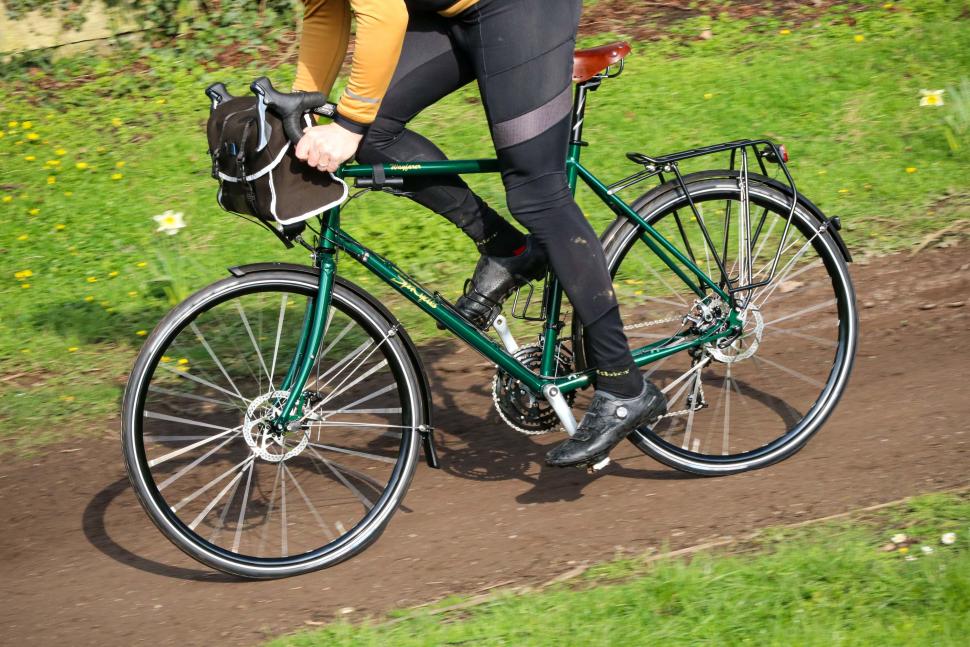
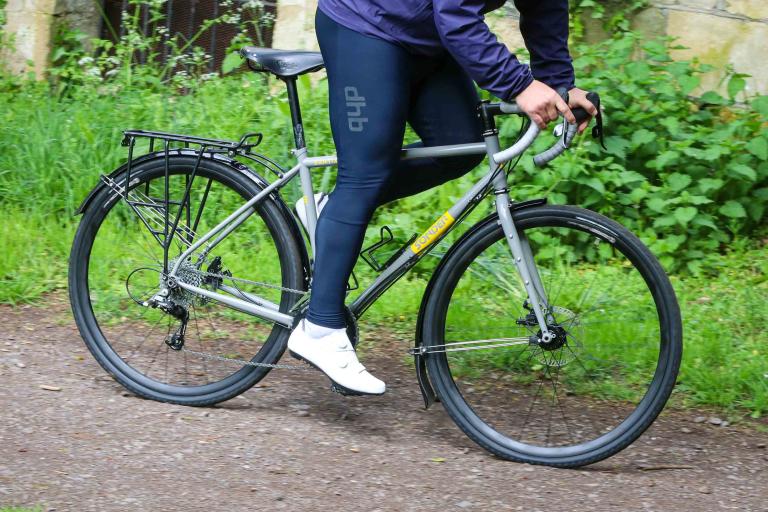
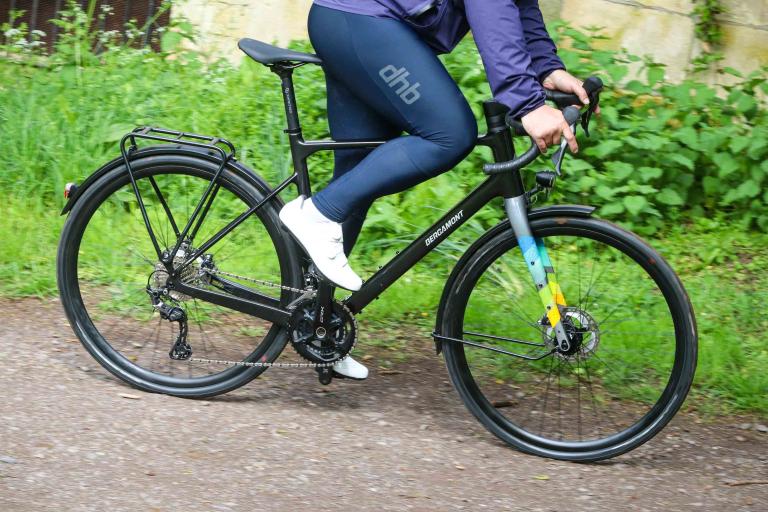
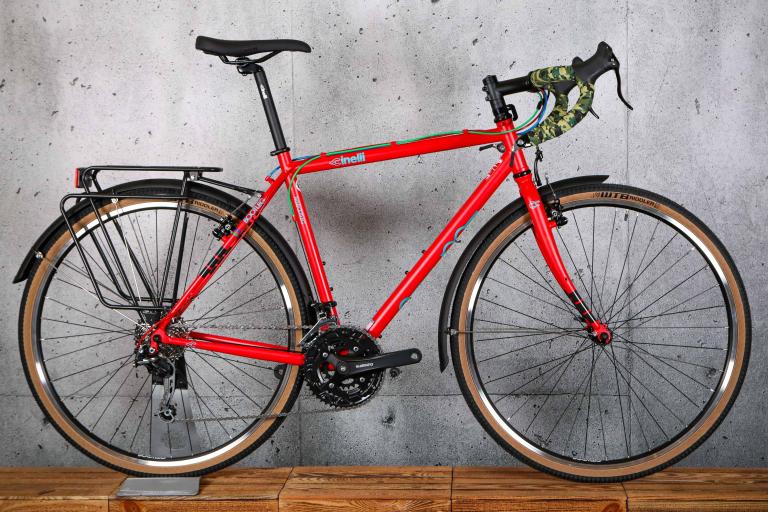
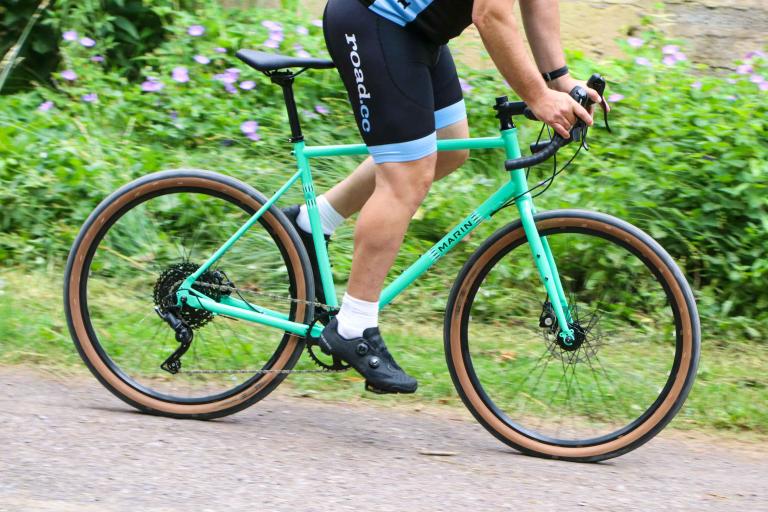
Add new comment
10 comments
This looks very similar to the Genesis Day One Ltd, which is a bit lighter and you can pick up for under £1k now Genesis are phasing it out. Also has dynamo lighting and charging cable plus guards, rack etc. It rolls very nicely once you get it up to speed and is brilliant for the winter commute (15 miles each way over shit south London surface) and great for off road. It's a tank - totally indestructible - but a genuinely multi purpose all round bike for anything outside club runs and so comfortable.
There aren't enough of these truly utilitarian machines about. Good to see this.
Great review. I've fitted Marathon tyres and they are incredibly stiff and as such I would never consider them on any of my bikes, even the tandem (which I've fitted out with Marathon Supremes - a different beast altogether).
I've always advised novices that the cheapest and easiest way to improve the performance of a bike is fitting good (appropriate to the usage) tyres. This road test is a classic example of how a change of tyres can transform a bike.
Schwalbe Marathons are awesome "survival" tires and virtually puncture-proof but probably the thickest, heaviest and stiffest things ever... at least in the narrower sizes. Absolutely jarring. In the bigger fatter widths they soften up abit and mellow out nicely.
Really good review. Cheers.
Thanks!
Out of curiosity, are these the two tyres in question?
https://www.bicyclerollingresistance.com/tour-reviews/compare/continenta...
I ask because, in this test at least, they have all but identical rolling resistance. (The test was conducted at 18mph however. Maybe the curves diverge at 7mph
Edit - my bad, it's these two (I think?)
https://www.bicyclerollingresistance.com/tour-reviews/compare/continenta...
Which has the Schwalbe rolling resistance clearly better than the Continental.
I think it is a lovely looking bike, that green. Nice to see a triple on a new bike. Shame about the tyres.
I have never relied on a shift under load to get to the inner ring, being off the power and high cadence ensures a good shift. Even on my over fettled XTR/Nokon set up. When you REALLY need the "granny" it is already too late. You must anticipate the need for it, and shift into the inner before the hill or the mud demands it. It did help when I finally rejected the initial foolish machoness of my early mountain bikeness. Get in the Granny early.
"but even on the flat, where the weight counts for less, the Wayfarer was reluctant to maintain any pace"
I always find such comments difficult to make sense of. Are you talking about a subjective feeling of speed, or actual measured speed? If the latter, what is the cause? Rolling resistance of the tyres, or aerodynamics (mainly due to upright seating position)? Or did they just screw the wheel bearings up too tight? Because it isn't due to the weight.
Nice to get a review of proper bike, by the way!
Edit... I got there, the tyres.
Yes, this further Marathon tyre rolling resistance comparison test might add more to the story about why the reviewer above found them to be so poor in their 32mm size (the 32's come out badly compared to the bigger sizes duo to different construction/materials):
https://www.bicyclerollingresistance.com/specials/schwalbe-marathon-32-3...
Wow - good find there. Thanks.